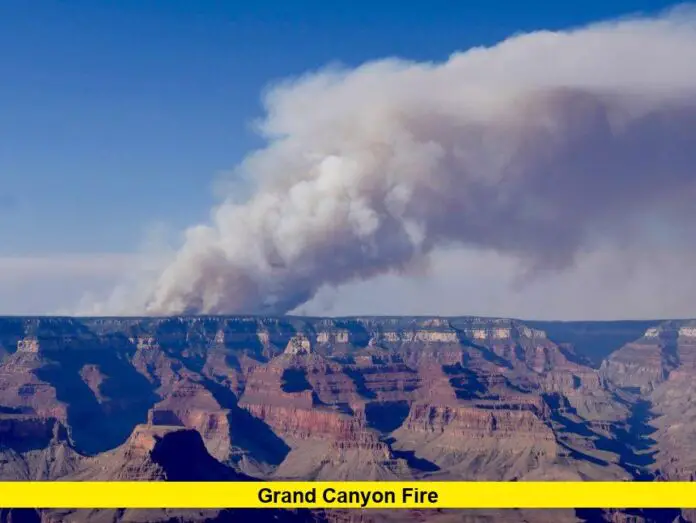The Grand Canyon fire has rapidly escalated into a major emergency after a lightning strike ignited the blaze on July 4, 2025. As of August 3, it has grown into a megafire, burning over 114,000 acres and forcing the closure of the North Rim of Grand Canyon National Park.
This wildfire, officially named the Dragon Bravo Fire, is now the largest active fire in the U.S. It has severely impacted local ecosystems, destroyed historical landmarks, and created dangerous conditions for firefighting crews and residents alike.
Table of Contents
🔥 Widespread Destruction at the North Rim
The North Rim, known for its remote beauty and historic structures, has been the hardest hit. Firefighters confirmed the complete destruction of the Grand Canyon Lodge, a 1927-built structure that stood as one of the most iconic accommodations in the park.
Other damages include:
- Over 70 cabins destroyed
- The North Rim Visitor Center lost
- Roads, campgrounds, and key hiking trails closed
- Evacuation of all staff, visitors, and nearby residents
With structures consumed and thick smoke in the air, the entire North Rim will remain closed through the 2025 season.
⚠️ Dangerous Weather Conditions & Fire Behavior
The fire continues to burn out of control, fueled by dry brush, extreme temperatures, and strong winds. Fire officials report several weather-driven fire events, including pyrocumulus clouds—large smoke plumes creating their own wind and lightning, which further complicate suppression efforts.
Key challenges firefighters are facing:
- Daytime temperatures over 100°F
- Gusts of wind reaching 30 mph
- Overnight humidity offering only brief relief
- Steep, rocky terrain limiting ground crew access
Despite the efforts of nearly 1,200 personnel, containment remains between 8% and 11%.
📊 Snapshot of the Grand Canyon Fire
| Category | Current Update |
|---|---|
| Name of Fire | Dragon Bravo Fire |
| Location | North Rim, Grand Canyon National Park |
| Date of Ignition | July 4, 2025 |
| Cause | Lightning strike |
| Acres Burned | Over 114,000 |
| Containment | Estimated at 8–11% |
| Structures Lost | ~70 cabins, Grand Canyon Lodge, Visitor Center |
| Personnel on Ground | ~1,200 |
🧭 Initial Response and Rising Criticism
In the early days, park officials opted for a “confine and contain” strategy, hoping to manage the fire without full suppression. However, as weather conditions worsened, the fire jumped control lines, consuming thousands of acres within days.
The delayed response has drawn criticism from local leaders and the public. Arizona’s governor has asked for a federal review of the fire management strategy.
🔍 Broader Fire Season Context
The Grand Canyon fire is not an isolated event. It is part of a wider wildfire crisis spreading across national parks this summer. Experts are calling this peak season one of the most dangerous in recent years.
Contributing factors include:
- Prolonged drought conditions
- Reduced forest moisture
- Higher-than-average summer temperatures
- Unpredictable lightning storms
Other parks like Yellowstone and Olympic are also battling significant fires. Nationwide, wildfire incidents are up more than 20% compared to the previous five-year average.
🔚 What’s Ahead
Firefighters continue around-the-clock operations to defend critical infrastructure, prevent further spread, and secure what remains of the North Rim. Air tankers, helicopters, bulldozers, and ground crews are all being utilized.
With monsoon rains delayed and fire-prone weather patterns continuing, containment efforts will remain difficult in the days ahead.
The Grand Canyon fire serves as a sobering reminder of how vulnerable even the most protected natural treasures are. Decades-old landmarks can vanish in hours, and recovery will take far longer.
Have thoughts on this wildfire or memories from the Grand Canyon you want to share? Drop a comment—we’d love to hear from you.
